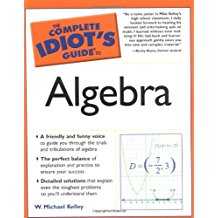Algebra: Unleashing Radical Powers
Unleashing Radical Powers
Radicals can actually be expressed without a radical sign by means of fractional exponents. The expression a1/2 (read "a to the one-half power") is equivalent to a, and b1/3 means the same thing as
However, the fractional exponent does not always have a 1 as its numerator; you can use other numbers to create more complicated radical expressions.
In general, the expression xa/b is equivalent to both
even though they look different, both mean the exact same thing, so it doesn't matter which one you choose. However, you'll usually find that the first one is more useful when simplifying variable expressions and the second is much handier for numbers.
Critical Point
Remember, the denominator of a fractional power is the index of the equivalent radical, and the numerator is a power, either of the radicand or of the entire radical.
Example 2: Simplify the expressions.
- (a) 642/3
- Solution: Rewrite 642/3 as
- The order of operations tells you to simplify parentheses first, and since the radical has an index of 3, you're looking for perfect cubes. Luckily, 64 = 43, and therefore
- Since 4 has a power of 3 within a radical of index 3, it is paroled, and you'll get 42 = 16. So, 642/3 = 16.
- If you had rewritten 642/3 as
- the answer is still 16; it's just harder to see that 4096 is a perfect cube (163 = 4096).
- (b) 45/3
- Solution: Rewrite the expression as
- Happily, 4 is a perfect square: 22 = 4.
You've Got Problems
Problem 2: Simplify the expression 253/2.

Excerpted from The Complete Idiot's Guide to Algebra © 2004 by W. Michael Kelley. All rights reserved including the right of reproduction in whole or in part in any form. Used by arrangement with Alpha Books, a member of Penguin Group (USA) Inc.
You can purchase this book at Amazon.com and Barnes & Noble.







